The value of historic structures is always under debate in Omaha. Many of the community’s finer homes were demolished, most are forgotten, and only a few have been saved. One of the most storied homes in north of Dodge Street was demolished in the 1960s. This is history of the Count Creighton Mansion in North Downtown Omaha.
A Biography of Count John A. Creighton

John Andrew Creighton (1831-1907) arrived in Omaha from Ohio as a 25-year-old farmer’s boy who went to college, became a telegraph and railroad builder, early freighter and trader, banker, manufacturer, millionaire and philanthropist.
Working with his brother Edward, John made his fortune laying the telegraph lines to connect the United States from coast-to-coast for the first time. John was married to Sarah Emily Wareham (1840-1888). Early in the pioneer city, John was a clerk in J.J. Brown’s store and he farmed land near the future Cortland Beach. After leaving Omaha for the gold fields of Montana for a decade, John came back to Omaha and became deeply involved in the city’s development and leadership. The Creighton family became active in several early Omaha businesses including the First National Bank of Omaha, the Omaha and Northwestern Railroad, the Union Pacific Railroad, the Union Stockyards, and the Omaha Cable Tramway Company.
“He has given more money to the establishment and support of public institutions than any other citizen of Omaha.”
— Omaha Bee, December 2, 1906
Most famously, the entire family including John funded the establishment of a university in the family’s name. As recognition for his good works in the favor of the Catholic church, in 1895 Pope Leo XIII named John Creighton a Knight of the Holy Roman Empire for his philanthropic support of Creighton University and other Catholic works. From then on, he was referred to as Count Creighton.
John’s wife Sarah (1840-1888) was very involved in charity work throughout Omaha, collecting food for the hungry, giving alms to the poor, and helping the grieving whenever she could. She was a member of St. John’s choir and gave money to many Catholic parishes around Omaha. She also guided some of her wealth towards Creighton, including building the Jesuit living quarters on the Administration Building and more. She bequeathed $50,000 for the construction of a new St. Joseph Hospital, which was started in 1890. After suffering debilitating arthritis and more, Sarah died at the age of 48.
After his wife died, Count Creighton gave away copious amounts of money. According to Creighton University, “among his better known donations” were the Poor Clares convent and the Creighton Home for Working Girls, as well as the John A. Creighton Medical College, Law School, Pharmacy School, and Dental School. In 1898, the Count paid for the opening of the Orpheum Theater. As the fourth theater in the Orpheum chain, they offered “high class vaudeville” that traveled from San Francisco to Los Angeles to Denver to Omaha. Eventually there were 59 theaters across the U.S. and a few in Canada.
When the Count died in 1907, his funeral was an extravagant event that included Mayor Jim Dahlman and influential political leader William Jennings Bryan as pall bearers, and was held at St. John’s Church. His passing was mourned by a lot of people in Omaha who saw photos in the newspaper and the many who attended. There was a large funeral procession from St. John’s Church to the home, where the body laid in state for several days. The Omaha Bee estimated more than 3,000 people came to visit. Afterwards he was buried under a large monument in the Holy Sepulchre Cemetery.
The late Count left an estate including $4,500,000 cash in 1907, which is worth almost $142,000,000 in 2022. His properties, holdings, and investments were worth $5,000,000 that year, too.
Building Italianate-ish Opulence
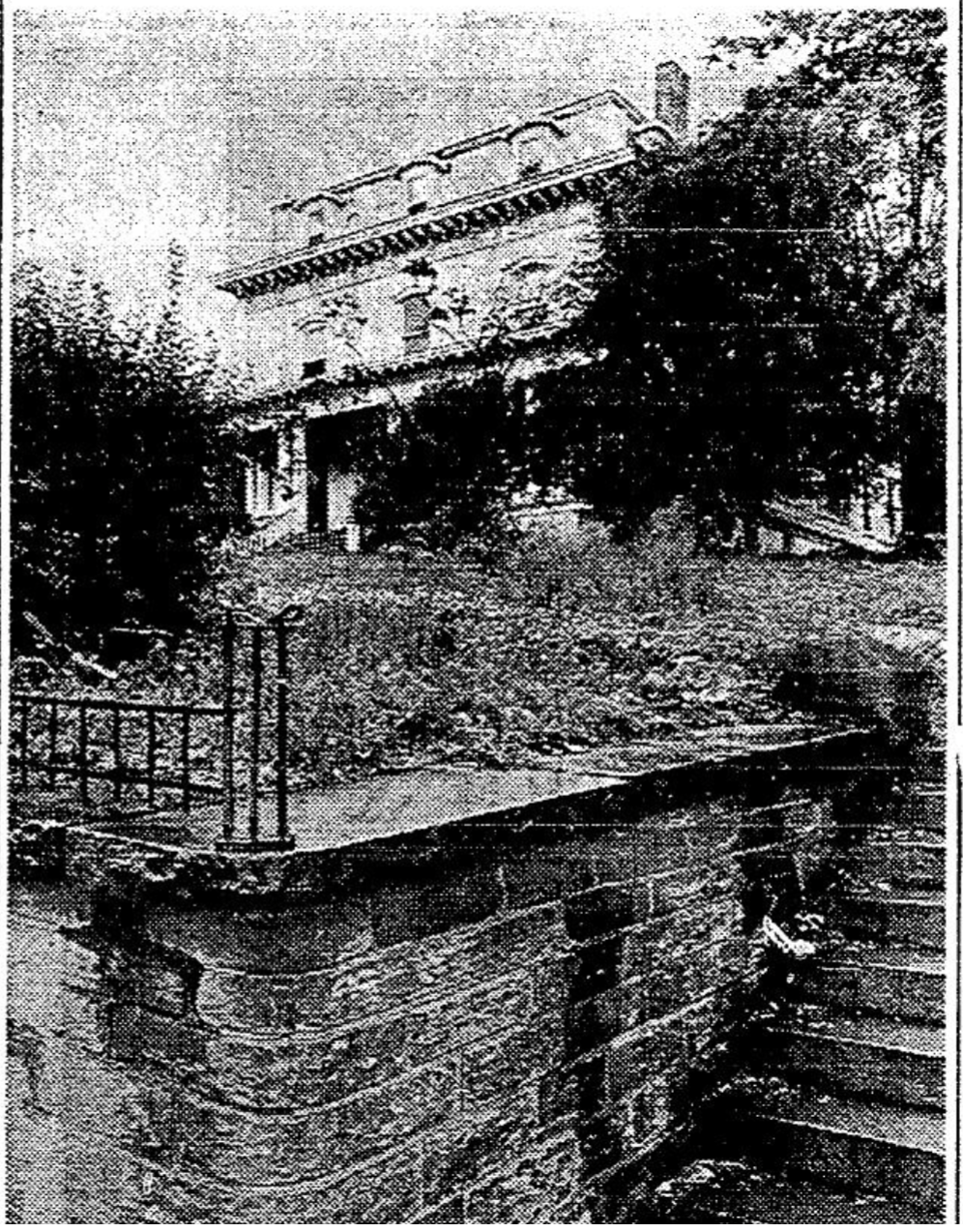

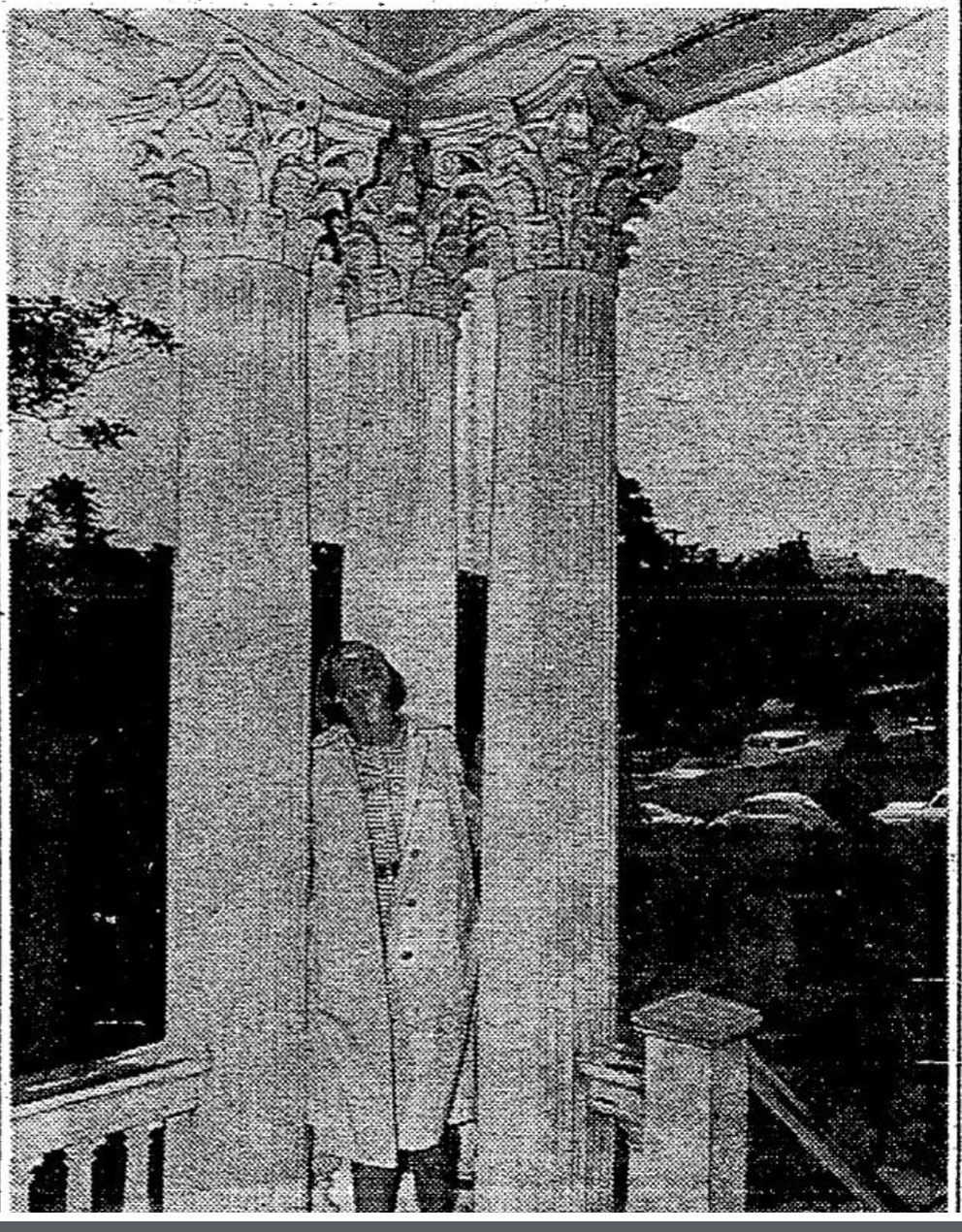
Jesse H. Lacey (1826-1899) was a pioneer grocery in early Omaha. Making his wealth early, Lacey had a large three-story mansion built in 1867 in the Italianate style with a mansard roof. It was a “brick front frame… of the variety that marked majestic farm estates of Iowa and Illinois of the Nineteenth Century,” which is how the World-Herald described the facade of the mansion in 1966. According to Omaha historian H.W. Becker in a letter to the editor, contractor J.F. Richmond built the mansion, taking it on next after building the Cozzens House Hotel for George Francis Train in 1867. The mansion was located at 404 North 20th Street, high in the western hills looking down on the growing city of Omaha. It was near Capitol Hill and had a good view of the Missouri River Valley.
A railroad man named Albert E. Touzalin (1842-1889) bought it in 1879, but quickly got out from underneath the house when he moved to Boston for work.
In 1881, John and his new wife Sarah bought the home from Touzalin. John’s brother Edward had a house at 1710 Chicago Street, and John’s lot covered the two blocks between them. Living there for more than 25 years, John and Sarah’s only child, a daughter named Lucretia (1869-1870) was born and died there.
The Creightons renovated the mansion immediately, and continually added onto it for the next two decades. Despite John calling it “the only farmhouse in city limits,” opulence dripped from every angle of the home. There were high ceilings, custom woodwork, fine sculpted detailing and ornate features throughout.
In a 1906 feature about the Count in the Omaha Bee, the newspaper said “the handsome residence” was a “model of simple elegance.” It piled on praise about the home saying, “In spite of the richness of the home its air of homeliness is the most marked. The rooms are finished in oak, the walls are thick, the carpets are velvety. There is plenty of light and color.”
The article continued, “A unique feature of the house is the Count’s ‘den…’ It… is a marvel of coziness and comfort. The walls and ceiling are handsomely frescoed and the woodwork is oak. On the ceiling, in the midst of cherubs and wreaths and surrounding a portrait of the Count, are mottos and typical sayings of the master of the house. ‘Here’s where I meet my friends and forget my enemies’ is one of the legends. Another is ‘Its wonderful how business keeps up.’”

After his wife died Count Creighton’s mansion included only his housekeeper, a Miss Cotter who’d worked for the family for 19 years, and “the servants.” Valued at $14,000, in 1906 there was a large fire that nearly wrecked the house. However, it was repairable and fixed by the Count’s 75th birthday in October 1906.
After the Count died, extended Creighton family continued to live in the home for several more years, and owned it for a few more decades. John A. Creighton’s nephew John D. Creighton (1844-1922) bought the 17-room mansion after he died for $18,000. In 1908, it was reassessed by the Douglas County Board of Equalization, which reduced the value from $30,500 to $24,500. That family lived there until its patriarch died in 1922.
Although the mansion ownership stayed in the Creighton family, soon after the Count died the house became a boarding house under the management of Ms. Lottie Dennis. However, she ran astray of the law repeatedly. In 1923, she was raided by the Omaha Police Department and arrested “on a charge of keeping a common and ill-governed house.” The next year, federal officers raided her again, this time arresting her for making and selling illegal booze at the mansion.
The Alpha Kappa chapter of Xi Psi Phi, an old dentist’s fraternity at Creighton University, leased the mansion in the late 1920s. However, that didn’t last long and the house became apartments again from at least 1928 until the 1940s.
The Creightons sold the mansion in 1941. After World War II, the Count Creighton Home served as the Sundberg Nursing Home. Advertising between 1946 and 1950 their ads announced, “Invalids, aged, bed patients. Day and night nurses, skilled supervisor. Christian atmosphere.”
From 1950 onward, the mansion served as an apartment building.
Making Way for the Freeway

In a 1966 article about the mansion, the World-Herald said, “Historians and architects agree Creighton Mansion is a ‘hodgepodge of design,’ and not a clear example of any one period. Yet the house has been a perennial target for preservation.”
In the early 1960s, the home was set to be demolished to make way for the new Interstate 480. Something strange happened on the way to demolition though: The Joslyn Art Museum acquired the Creighton Mansion.
A movement to save the mansion had emerged as soon as the government announced where the highway would go. Preservationists became bent on moving the house, which architect Frank Latenser estimated at weighing 600 tons. He said that because of the weight it wasn’t feasible to move it. “Even after careful. restoration, its life span will be short if exposed to the elements,” he told the World-Herald. In 1963, the Joslyn Art Museum Historic Sites Committee accepted his proposal that the period architectural elements of the mansion be salvaged and given to the museum. They were determined to save, “old fireplaces, cornices, iron lintels and arabesque panels.”
“These and pieces preserved from other old homes could be incorporated into a museum built around a modern fireproof ‘core,’” the newspaper quoted a Joslyn official as saying.
In June 1966, the newspaper announced Joslyn was moving the mansion piecemeal to the museum. However, no progress was made, and in 1986 the museum was reported to still have salvaged parts of the house, saying “the architectural remnants of the Victorian-style home are stored at the museum.” Plans were for the Creighton Mansion remnants to be used on a new structure, three stories high that would have “look[ed] just like the Creighton House, but with sounder boards.” Joslyn planned a new history wing to the north of the current museum with the house as an anchor and a courtyard between featuring rows of gas lamps for a “very European feeling.”
“The most historic house in Omaha has overlooked the city almost one hundred years, almost the entire period of Nebraska statehood. It is still beautiful.”
—Omaha historian H.W. Becker letter to the editor, Omaha World-Herald, June 27, 1966
Much like the Jefferson Square neighborhood to the east though, it seems like the Count Creighton Mansion was simply forgotten by Joslyn, as well as history fans, city planners, and people who once loved it most. There is no hide or hair of the entire structure anywhere in the city today.
A winding roadway through North Omaha was named the John A. Creighton Boulevard in the 1920s. It is connected to city’s boulevard system and was acknowledged when that system was listed on the National Register of Historic Places. However, the buildings named for the Count at Creighton University have long since been demolished, and merely the ghost of the family’s shared name hangs over the institution today.
There is no memorial or history marker at Creighton University or anywhere in Omaha that the Count Creighton Mansion ever stood.
You Might Like…
MY ARTICLES ABOUT THE HISTORY OF CREIGHTON UNIVERSITY
BUILDINGS: Creighton Observatory | Creighton Hall | Campion House | St. John’s Parish | Creighton High School
RELATED: Count Creighton House | Creighton Working Girls Home | Omaha DePorres Club | Beal’s Grill | Holy Family Parish
MY ARTICLES ON THE HISTORY OF ARCHITECTURE IN NORTH OMAHA
GENERAL: Architectural Gems | The Oldest House | The Oldest Places
PLACES: Mansions and Estates | Apartments | Churches | Public Housing | Houses | Commercial Buildings | Hotels | Victorian Houses
PEOPLE: ‘Cap’ Clarence Wigington | Everett S. Dodds | Jacob Maag | George F. Shepard | John F. Bloom
HISTORIC HOUSES: Mergen House | Hoyer House | North Omaha’s Sod House | James C. Mitchell House | Charles Storz House | George F. Shepard House | 2902 N. 25th St. | 6327 Florence Blvd. | 1618 Emmet St. | John E. Reagan House
PUBLIC HOUSING: Logan Fontenelle | Spencer Street | Hilltop | Pleasantview | Myott Park aka Wintergreen
NORMAL HOUSES: 3155 Meredith Ave. | 5815 Florence Blvd. | 2936 N. 24th St. | 6711 N. 31st Ave. | 3210 N. 21st St. | 4517 Browne St. | 5833 Florence Blvd. | 1922 Wirt St. | 3467 N. 42nd St. | 5504 Kansas Ave. | Lost Blue Windows House | House of Tomorrow | 2003 Pinkney Street
HISTORIC APARTMENTS: Historic Apartments | Ernie Chambers Court, aka Strehlow Terrace | The Sherman Apartments | Logan Fontenelle Housing Projects | Spencer Street Projects | Hilltop Projects | Pleasantview Projects | Memmen Apartments | The Sherman | The Climmie | University Apartments | Campion House
MANSIONS & ESTATES: Hillcrest Mansion | Burkenroad House aka Broadview Hotel aka Trimble Castle | McCreary Mansion | Parker Estate | J. J. Brown Mansion | Poppleton Estate | Rome Miller Mansion | Redick Mansion | Thomas Mansion | John E. Reagan House | Brandeis Country Home | Bailey Residence | Lantry – Thompson Mansion | McLain Mansion | Stroud Mansion | Anna Wilson’s Mansion | Zabriskie Mansion | The Governor’s Estate | Count Creighton House | John P. Bay House | Mercer Mansion | Hunt Mansion
COMMERCIAL BUILDINGS: 4426 Florence Blvd. | 2410 Lake St. | 26th and Lake Streetcar Shop | 1324 N. 24th St. | 2936 N. 24th St. | 5901 N. 30th St. | 4402 Florence Blvd. | 4225 Florence Blvd. | 3702 N. 16th St. | House of Hope | Drive-In Restaurants
RELATED: Redlining | Neighborhoods | Streets | Streetcars | Churches | Schools
MY ARTICLES RELATED TO PIONEER NORTH OMAHA (1854-1867)
PEOPLE: James Comey Mitchell | James M. Parker | Florence Kilborn |
NEIGHBORHOODS: Winter Quarters | North Downtown | Saratoga | Sulphur Springs | Florence | East Omaha | Jefferson Square Neighborhood |
CHURCHES: Seventeenth Street Methodist |
BUSINESSES: Florence Mill | Florence Ferry | Saratoga Springs Hotel | Railroads |
PUBLIC PLACES: Jefferson Square Park | Mormon Tree |
CEMETERIES: Prospect Hill Cemetery | Missing Cemeteries
EVENTS: Execution of Cyrus Tator | Pinney Farm Murders |
STREETS: Military Road | Saddle Creek Road
OTHER: Mob Violence | Florence Churches | Count Creighton House
Elsewhere Online
- “The Death of Count Creighton,” Woodstock Letters, Volume XXXVI, Number 1, 1 February 1907. Jesuit Online Library.
- “John Andrew Creighton” on findagrave.com
- “Chapter II: Before The Beginning” by by Carolyn J. Boro and Beverly T. Mead in 1991 for Creighton University.
- Creighton: biographical sketches of Edward Creighton, John A. Creighton, Mary Lucretia Creighton, Sarah Emily Creighton by Patrick A. Mullens, S.J. for Creighton University.
- “John A. Creighton” on Wikipedia
BONUS!
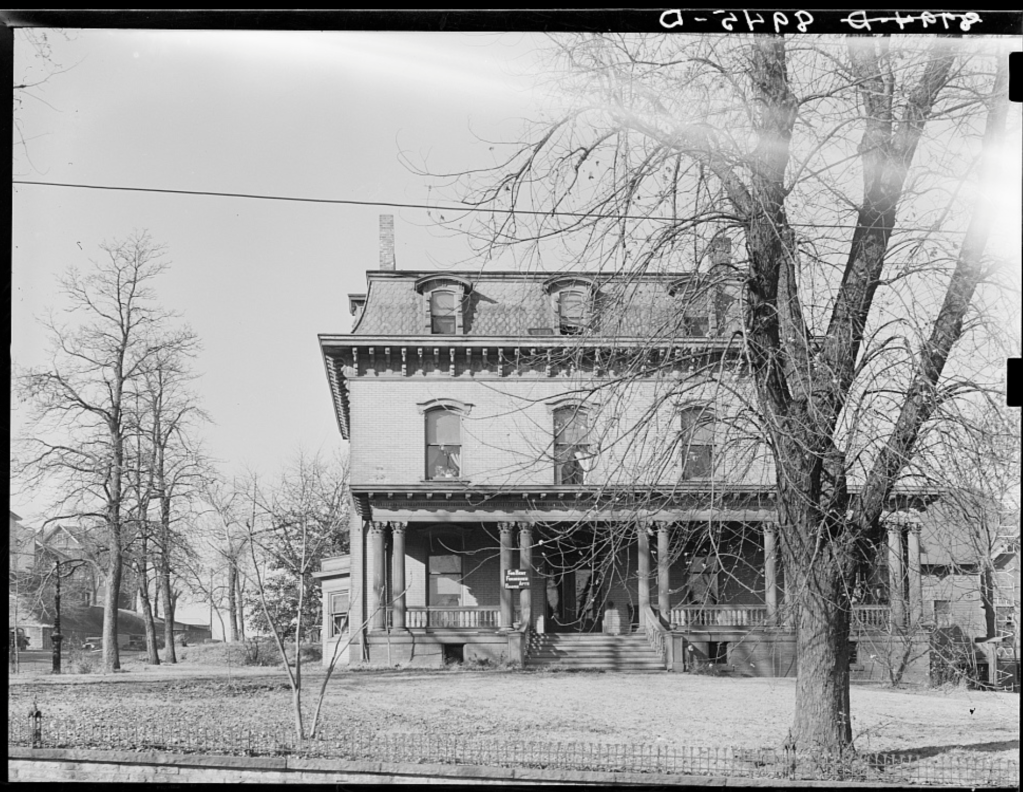

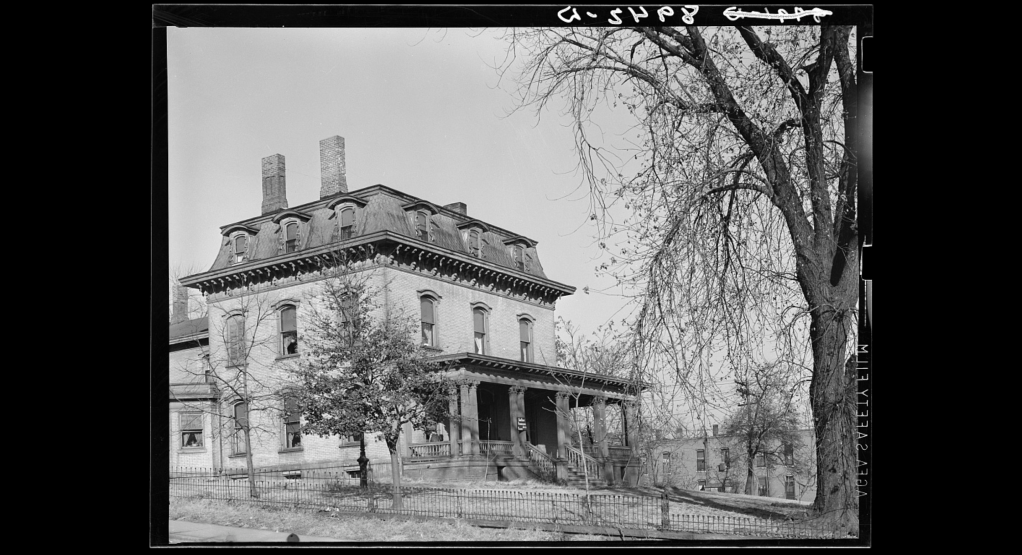



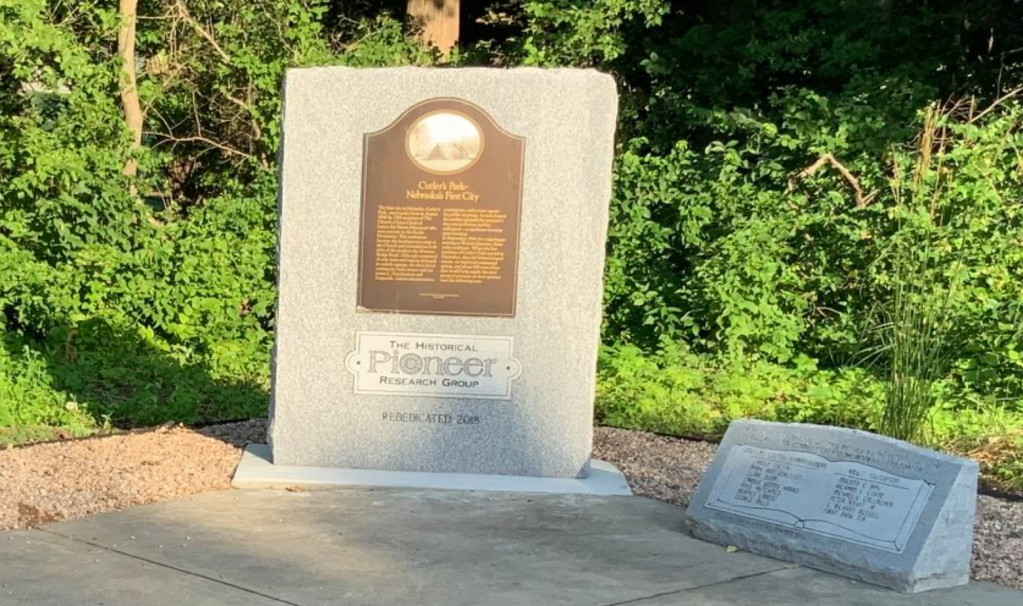
Leave a comment